Let’s talk about food. Asia is renowned for its rich culinary tapestry, where national dishes in the continent represent a dynamic blend of tradition and modern innovation. From sumptuous savoury delights to delectable desserts, each country’s signature dish reflects its unique heritage and evolving culinary trends.
Some nations showcase an array of iconic recipes, while others highlight a singular dish that encapsulates their cultural identity. As we explore Asia’s gastronomic landscape in 2025, prepare to embark on a journey of flavours that continue to captivate food enthusiasts around the globe!
Also read: Spiciest Foods Around Asia! Can You Stomach Them All?
1. Malaysia – Nasi Lemak
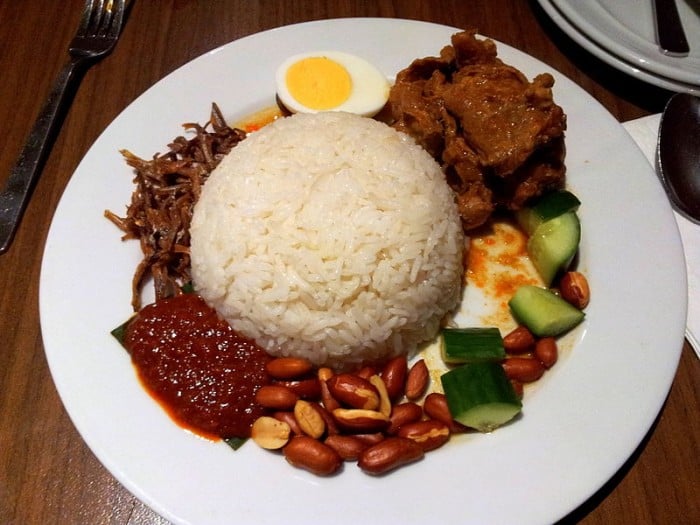
Image credit: Mw12310 via Wikimedia Commons
A rice dish cooked with pandan leaf and coconut milk, Nasi Lemak is the most popular in Malaysia, but its savoury fame spreads to its neighbouring countries, such as Thailand, Indonesia, Singapore, and even Brunei Darussalam and Southern Philippines. Served as a breakfast dish, it is served with fish, peanuts, chili paste, cucumber, and various side dishes, such as lamb curry. These combinations offer a truly diverse flavour in just one dish. It has been voted as one of the healthiest breakfast foods in TIME Magazine.
2. Singapore – Chicken Rice
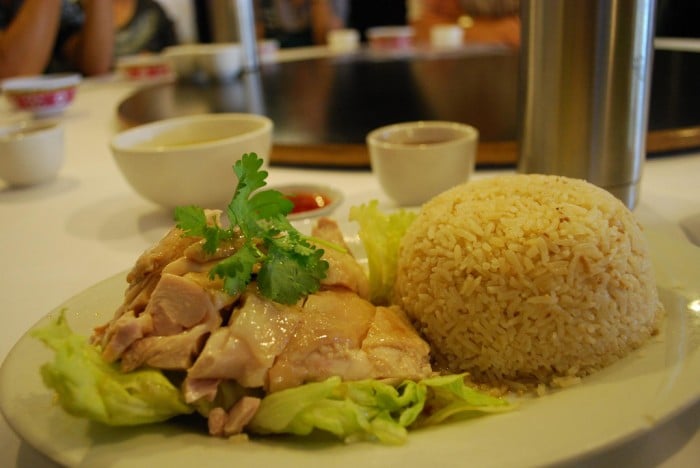
Image credit: Alpha | Flickr
Yes, it doesn’t have some fancy nickname, yet it is widely known across Singapore and beyond. It was adapted from Chinese immigrants who came from Hainan Island, where it was locally called Wenchang Chicken. Unlike other dishes, the secret to mouthwatering Chicken Rice is not how the chicken is cooked, but how the rice and chili sauce are perfectly concocted. These are the most important factors that can make or break this simple but absolutely flavourful dish.
3. Hong Kong – Char Siu
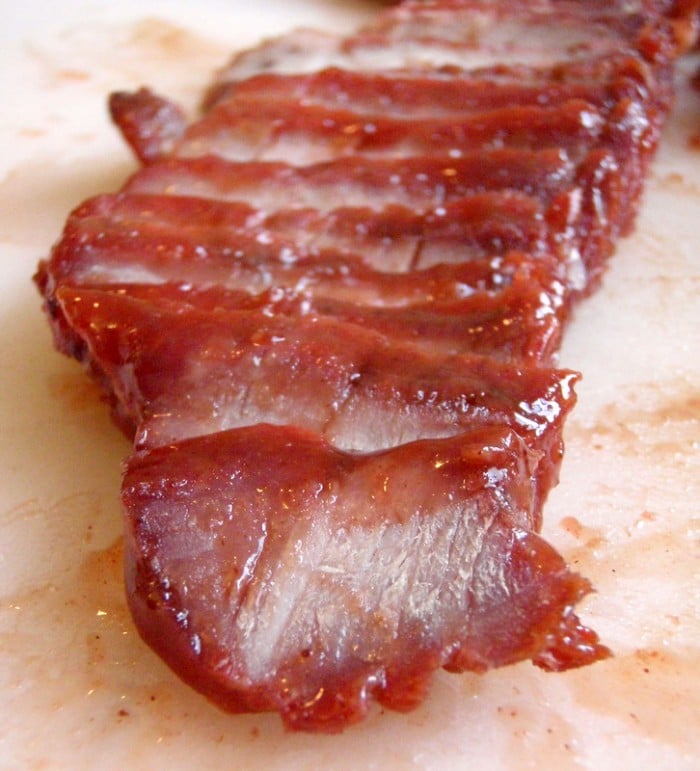
Image credit: Joy | Flickr
Char Siu is a dish that is hard to miss in Hong Kong. You can often see this hanging in establishments that sell smoked or roasted meat, such as chicken, duck, and pork. In a nutshell, Char Siu is a specially prepared pork barbecue, but it really has this distinct taste that will keep you coming back for more. Char Siu is consumed as an independent lunch or early dinner dish, mainly as a rice topping or rice box meal.
Also read: 20 Philippine Provinces for the Absolute Foodie
4. Philippines – Adobo

Image credit: dbgg1979 | Flickr
Adobo is the unofficial Filipino national dish, but even so, it is perhaps the perennial favourite among locals and even foreigners. While there are numerous variations of Adobo, especially in the provinces, it all boils down to the basic ingredients of chicken or pork (or both), soy sauce, vinegar, some pepper, and a bay leaf. With its amazingly great taste, many people wonder what sorcery is behind it, but I think it is the love that is behind its preparation that makes it a truly special dish.
5. Indonesia – Tumpeng
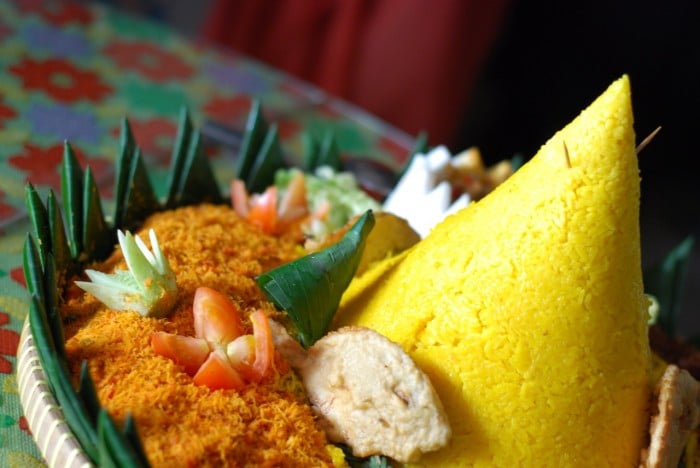
Image credit: Miss_yasmina | Flickr
You’ll easily recognise Tumpeng because it literally looks like a mountain of delectable rice goodness surrounded by vegetable and meat side dishes. The rice can be steamed, cooked as yellow rice with turmeric, or as uduk rice with coconut milk. It was already considered a culinary icon even before it became the official national dish in 2014. The inspiration comes from the mountains and active volcanoes found all over the country, and it’s amazing how this dish binds the diversity of Indonesian culture and tradition.
6. Brunei Darussalam – Ambuyat
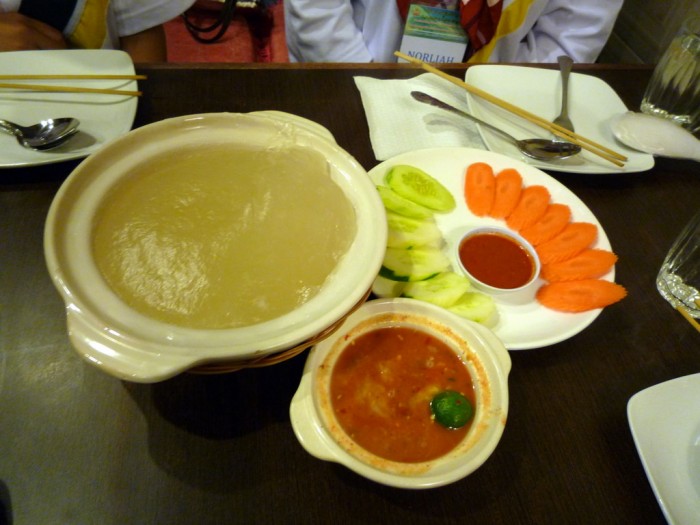
Image credit: E_chaya | Flickr
Ambuyat is one of the most peculiar dishes in our list. The official Bruneian dish is made from a mixture of hot water and sago and appears like a very sticky semi-translucent paste. Ambuyat is eaten by scooping with a pair of bamboo sticks called “candas” or “chandas” and then dipping into a thick and spicy sauce called “cacah.” Just like most Asian dishes, it is often accompanied by side dishes composed of meat and fish.
7. Japan – Sushi
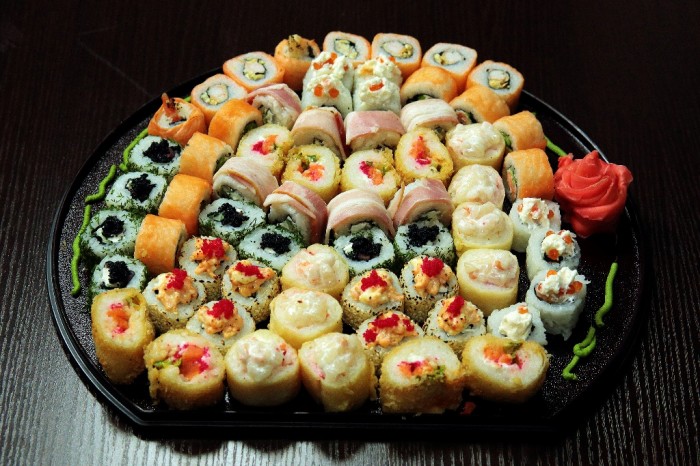
Image credit: Yuri Samollov | Flickr
Sushi is perhaps one of the most popular national dishes in Asia. It is often mistaken for a similar dish, sashimi, but they are actually two very different types of food. Sushi is prepared with white or sometimes brown rice and raw seafood. It is often served with soy sauce, wasabi, or pickled ginger. Daikon is also a popular garnish that comes with each serving.
Also read: What to Eat in Japan: 23 Must-Try Foods Other Than Sushi
8. Laos – Tum Mak Hoong
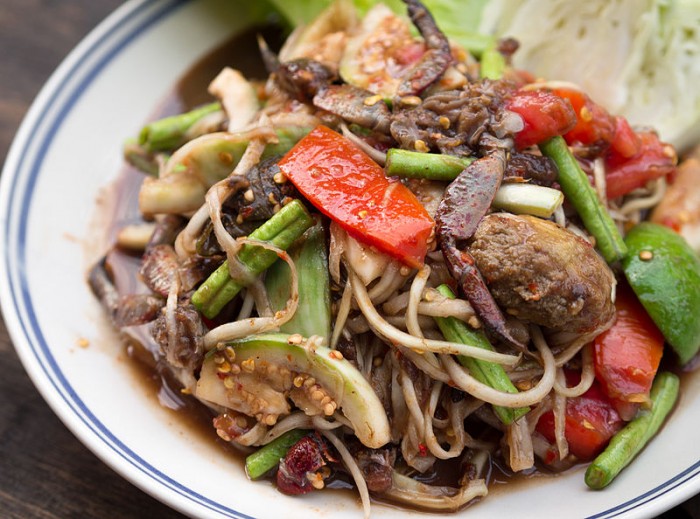
Image credit: Takeaway via Wikimedia Commons
Tum Mak Hoong is a traditional green papaya salad from Laos. It is one of the few dishes that combine all main tastes of the Laotian cuisine in a single dish – sweet, sour, salty, spicy, and savoury. Tourists often mistake this dish for a dessert because of papaya being one of the main ingredients, but it is actually a very savoury dish with chili, fish sauce, and palm sugar. It is also often mixed with crab and pla ra, making it a truly distinct dish.
9. Mongolia – Buuz
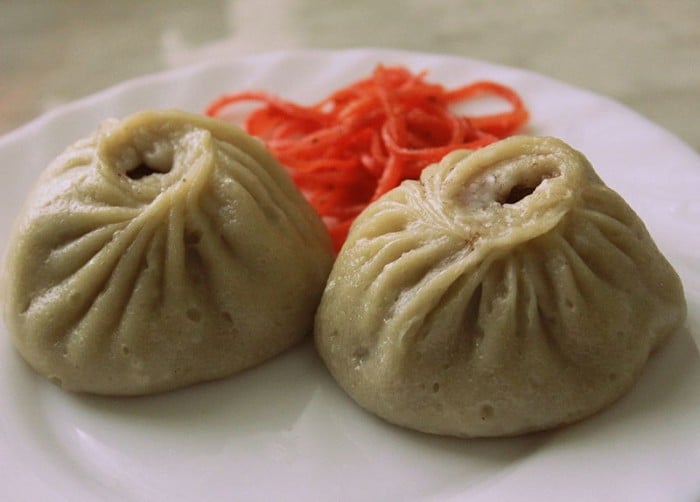
Image credit: Аркадий Зарубин via Wikimedia Commons
Buuz is a kind of steamed dumpling filled with meat. Traditionally, it is eaten during the New Year, but Buuz is also accessible in cafes and restaurants around the capital, Ulaanbataar. It is often consumed with fried bread, along with tea or in some cases, vodka.
10. Nepal – Dal Bhat
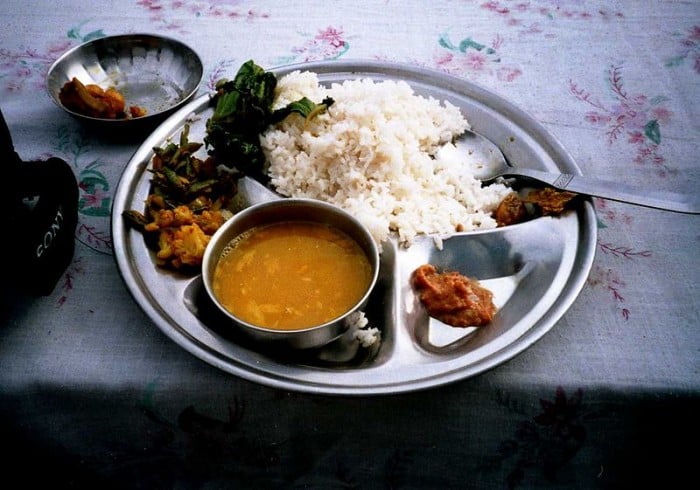
Image credit: 松岡明芳 via Wikimedia Commons
Dal Bhat is a popular Nepalese meal that consists of cooked lentil soup and steamed rice. There are numerous variations of this dish in the country, especially in locations where rice doesn’t thrive well, where it is substituted with millet, maize, or barley. It is often served with seasoned vegetables, curry, and pickles.
11. Thailand – Pad Thai
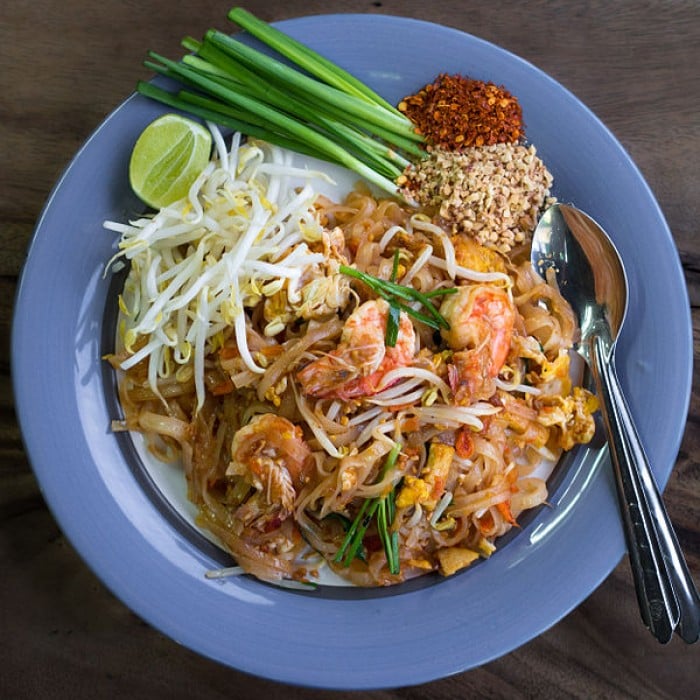
Image credit: Takeaway via Wikimedia Commons
Also called Phat Thai, Pad Thai is a stir-fried rice noodle dish that is very visible in local eateries and is usually served as street food. It is flavoured with tamarind pulp, shrimp, garlic, and palm sugar, and the rice noodles are stir-fried with tofu and eggs. Pad Thai has several versions, including one that has pork chop slices. However, many eateries maintain the original version of the dish (more seafood and no pork).
12. South Korea – Galbi
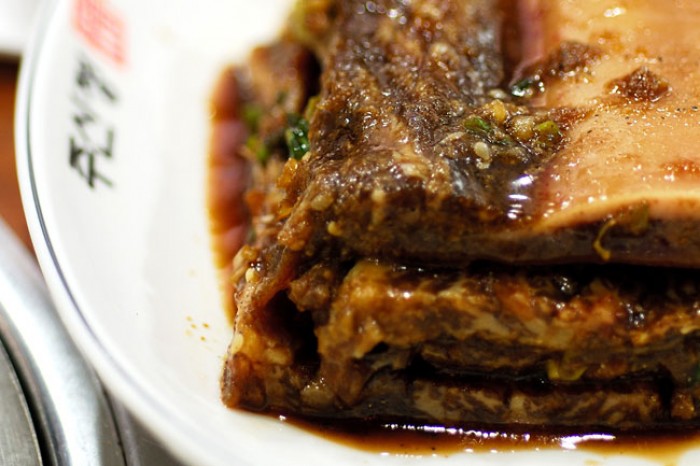
Image credit: Nisa via Wikimedia Commons
Galbi is a grilled dish made with beef or pork ribs marinated in Korean soy sauce. Like other dishes, it has many varieties, such as chicken galbi. In restaurants, it is one of those dishes cooked on tabletop grills, and it is served with leafy vegetables, such as lettuce, to wrap the meat before dipping it in a sauce called ssamjang.
Also read: 10 Unique Delicacies in East Malaysia That Every Foodie Needs to Try
Above all, the evolving culinary landscape of 2025 underscores the timeless allure of national dishes in Asia. Each dish, from Malaysia’s flavourful Nasi Lemak to Japan’s iconic sushi, not only offers a unique taste of tradition but also reflects the modern innovations shaping today’s gastronomic trends.
Exploring these national dishes in Asia provides a delightful insight into a continent where cultural heritage and contemporary creativity blend seamlessly, inviting every food enthusiast to savour a journey of rich flavours and enduring traditions.




